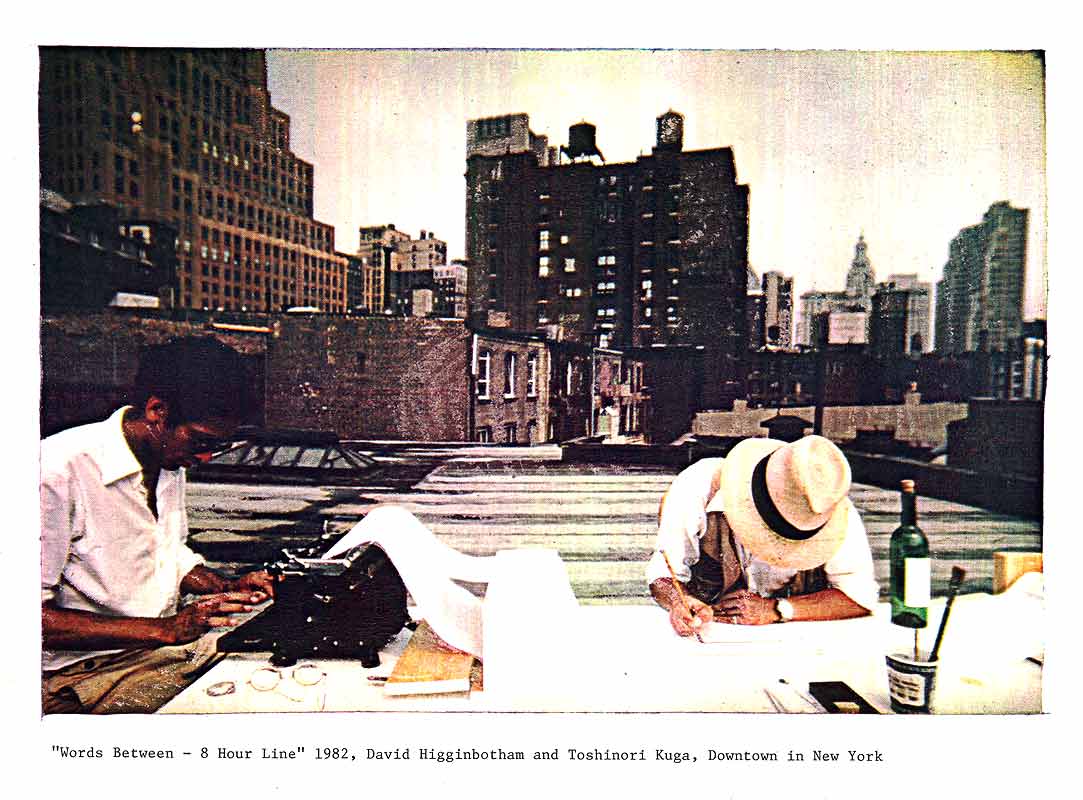Results for "" in Works, Documents
Searching for Works/Documents which meet the following criteria:
- Has any of AAT Subjects: documentation (function)
Results 1 through 13 of 13
-
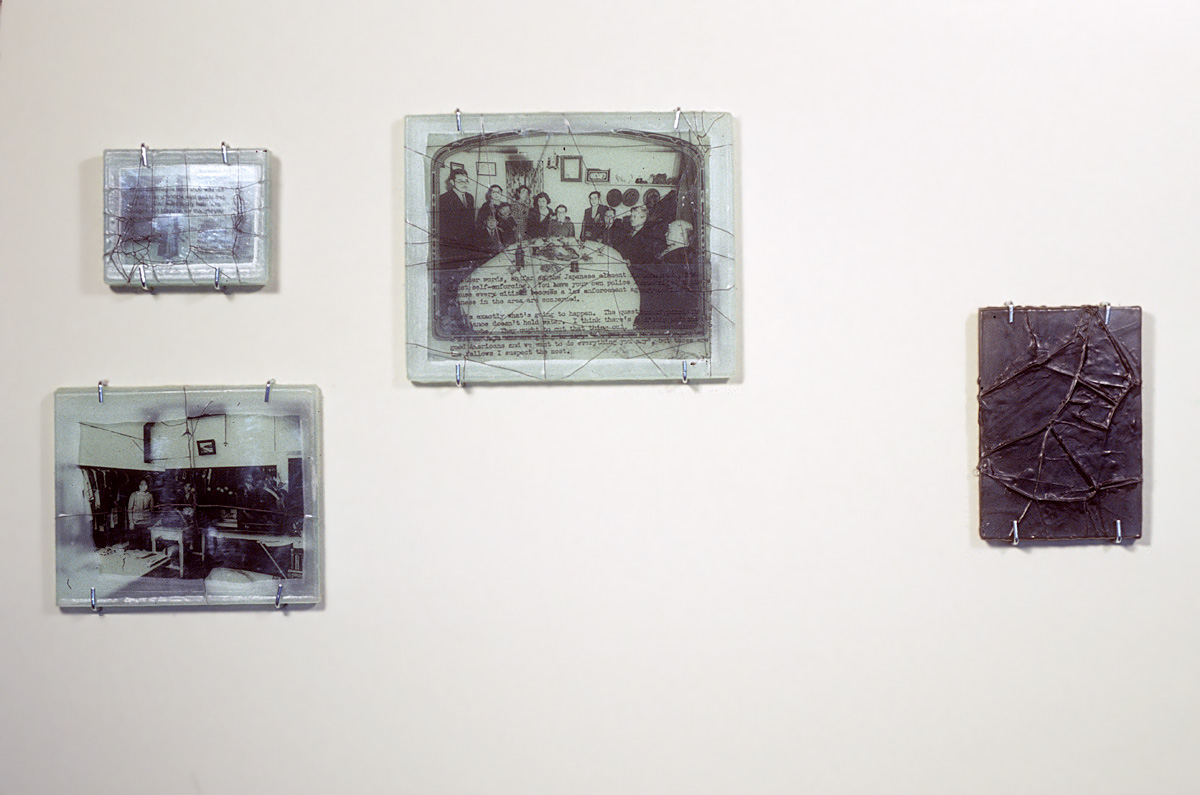 Memory Text (Work) by Imagire, Dorothy (1990)
Memory Text (Work) by Imagire, Dorothy (1990) Materials and Techniques: mixed-media installation
Subjects: concentration camps; documentation (function); documents; histories; immigrants; memory; racial discrimination; text (layout feature)
Local Subjects: burden; Executive Order 9066; heritage; Imagire, Dorothy; Japanese-American internment; World War II
-
 Amnesia in the Library (Work) by Imagire, Dorothy (1990)
Amnesia in the Library (Work) by Imagire, Dorothy (1990) Materials and Techniques: photocopies waxed on rice paper
Subjects: children (people by age group); documentation (function); documents; histories; memory; racial discrimination
Local Subjects: Executive Order 9066; Imagire, Dorothy; Japanese-American internment; World War II
-
 Japanese American Concentration Camp (Work) by Imagire, Dorothy (1990)
Japanese American Concentration Camp (Work) by Imagire, Dorothy (1990) Materials and Techniques: mixed-media installation
Subjects: concentration camps; documentation (function); documents; histories; life; memory; racial discrimination
Local Subjects: Executive Order 9066; Imagire, Dorothy; Japanese-American internment; World War II
-
 Submerge (Work) by Zheng, Lianjie (2000)
Submerge (Work) by Zheng, Lianjie (2000) Materials and Techniques: performance art
Subjects: documentation (function); technology
Local Subjects: alienation; excess; modern life
-
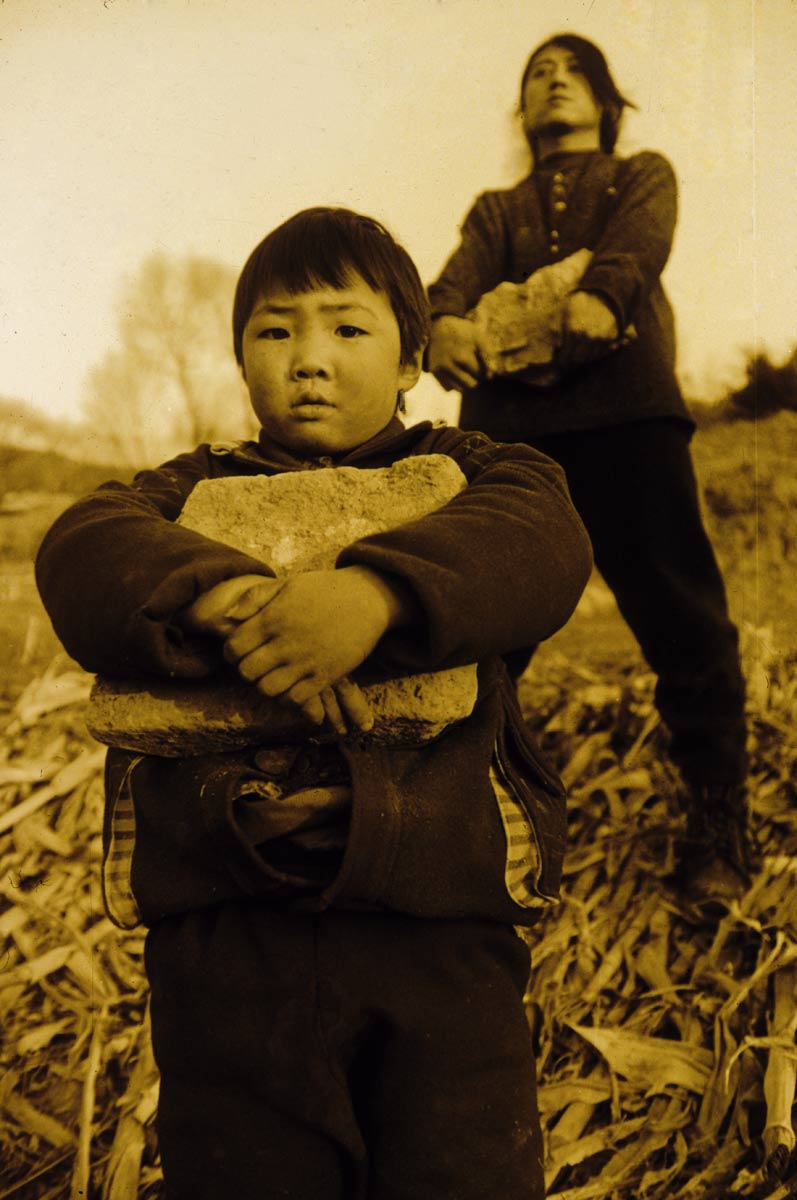 Bricks and Stones (Work) by Zheng, Lianjie (1999)
Bricks and Stones (Work) by Zheng, Lianjie (1999) Materials and Techniques: performance art
Subjects: China (nation); documentation (function); Great Wall of China (wall); histories; villages
Local Subjects: village life; environment; modern life; Zheng, Lianjie
-
 X-Ray (Work) by Zheng, Lianjie (1999)
X-Ray (Work) by Zheng, Lianjie (1999) Materials and Techniques: performance art
Subjects: China (nation); documentation (function); protesting; Tian'anmen Square (historic site)
Local Subjects: June 4, 1989; oppression; student massacre; Zheng, Lianjie
-
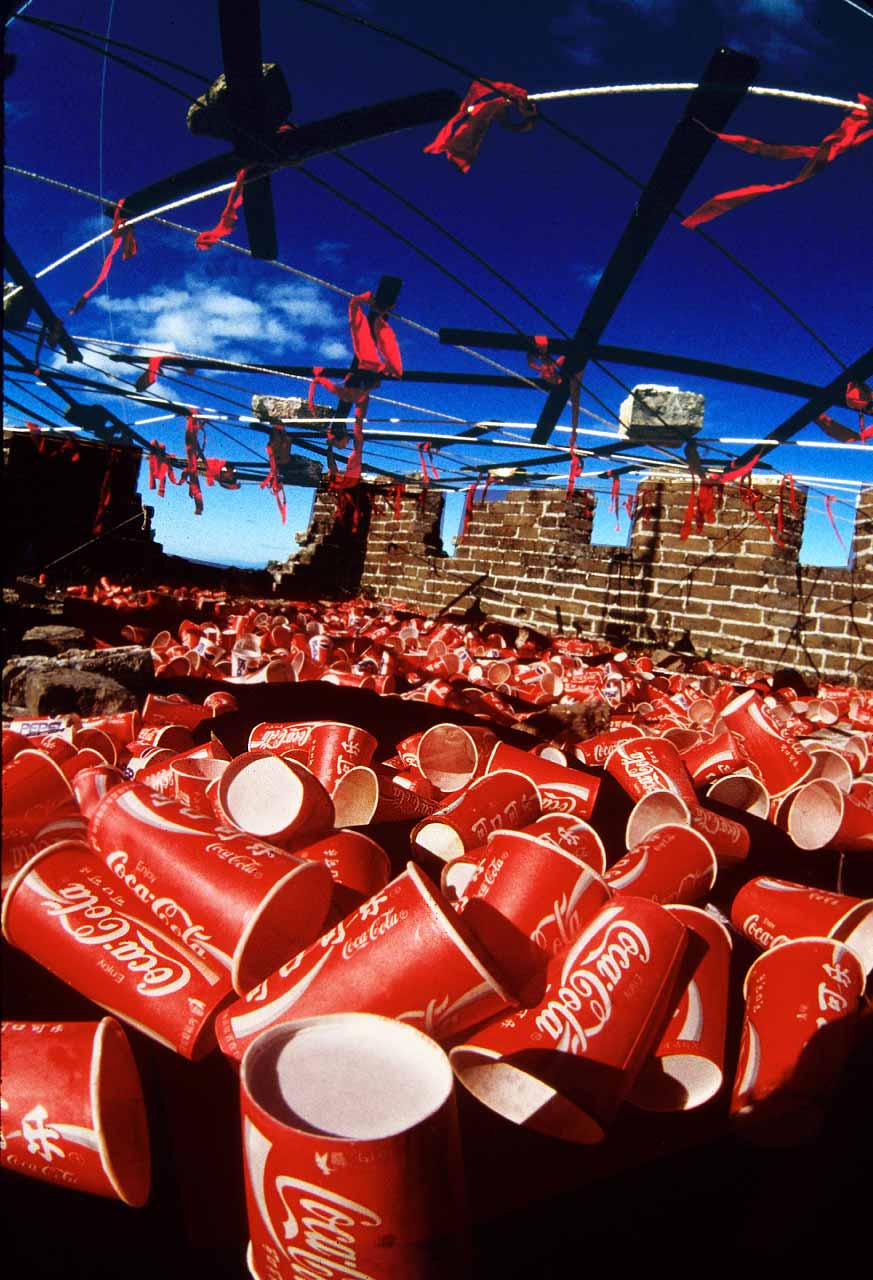 Black Cola (Work) by Zheng, Lianjie (1993)
Black Cola (Work) by Zheng, Lianjie (1993) Materials and Techniques: performance art and installation
Subjects: China (nation); documentation (function); Great Wall of China (wall); histories
Local Subjects: consumerism; domination; hegemony; modern life; Zheng, Lianjie
-
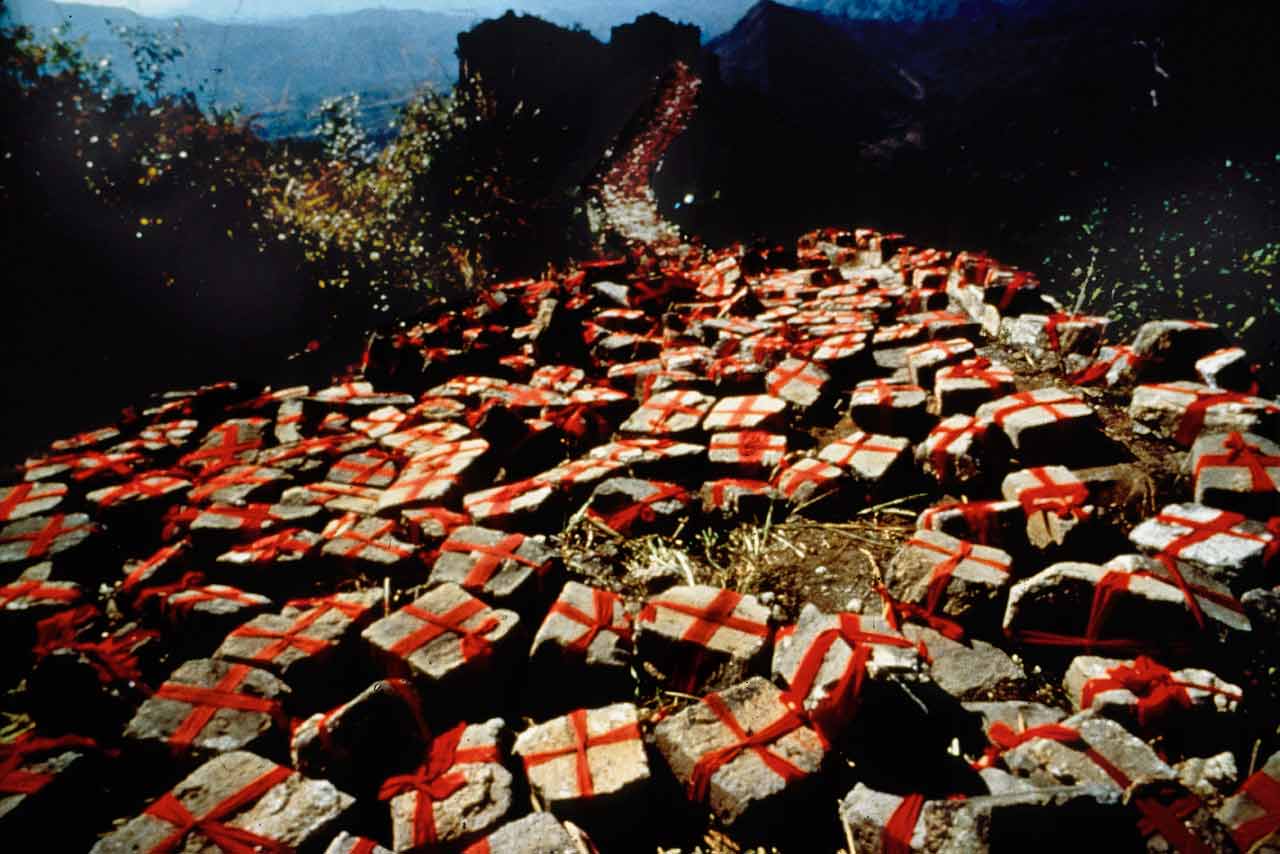 Huge Explosion (Work) by Zheng, Lianjie (1993)
Huge Explosion (Work) by Zheng, Lianjie (1993) Materials and Techniques: performance art and installation
Subjects: community development; rural development; China (nation); documentation (function); Great Wall of China (wall); histories; mourning; people (agents); rituals (events); rural areas; time
Local Subjects: endurance; repetition; relationships; Zheng, Lianjie
-
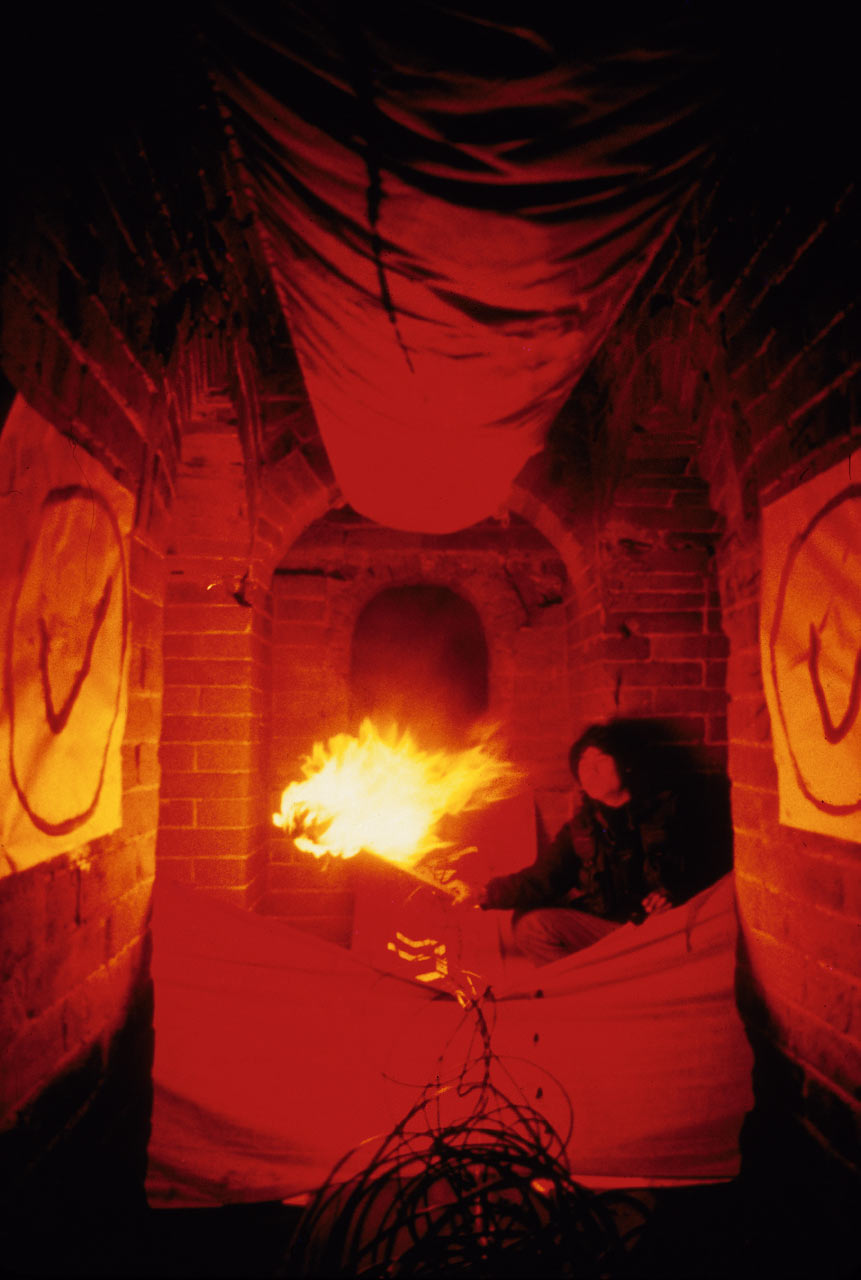 Red Hole (Work) by Zheng, Lianjie (1993)
Red Hole (Work) by Zheng, Lianjie (1993) Materials and Techniques: performance art and installation
Subjects: documentation (function); red
Local Subjects: Zheng, Lianjie
-
 Bathing In Grey Wind (Work) by Zheng, Lianjie (1990)
Bathing In Grey Wind (Work) by Zheng, Lianjie (1990) Materials and Techniques: performance art
Subjects: documentation (function); Great Wall of China (wall); landscapes (representations); nudity; wind
Local Subjects: Zheng, Lianjie
-
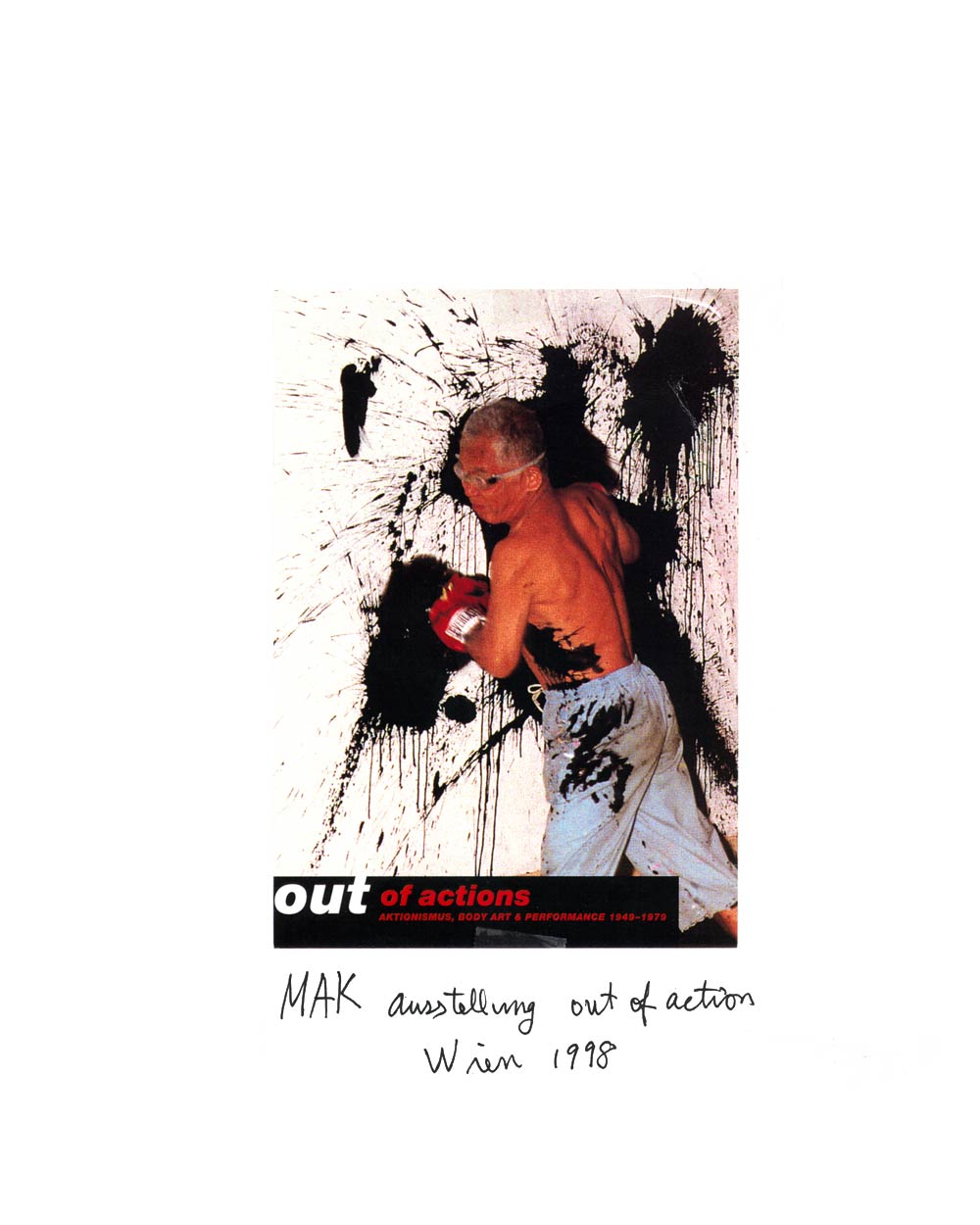 Photographs from "Out of Actions", 1998 (Document) by Shinohara, Ushio (1998)
Photographs from "Out of Actions", 1998 (Document) by Shinohara, Ushio (1998) Performance in Wien, 1998.
-
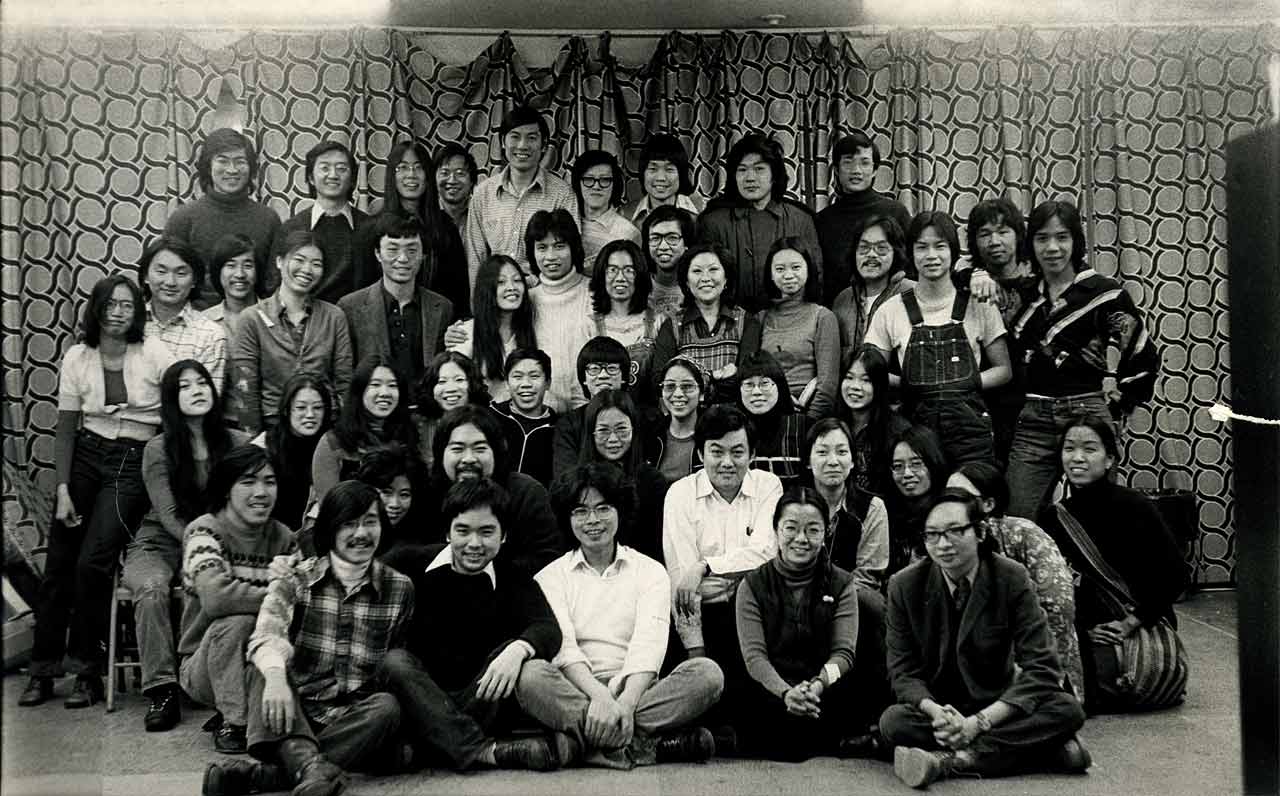 Photograph of group portrait of the Basement Workshop, [1972] (Document) (0000)
Photograph of group portrait of the Basement Workshop, [1972] (Document) (0000) CREDIT: Basement Workshop at 22 Catherine Street, New York City, 1972. Photographer: Bob Hsiang Prints of original with permission of the photographer BRIEF TIMELINE OF THE BASEMENT WORKSHOP AND HISTORY: 1970 Basement Workshop founded 1974 Asian American Dance Theatre founded; Nixon resigns due to Watergate 1988 Thomas Krens, joins Guggenheim 1989 Tiananmen Square Massacre 1990 Collapse of the Soviet Union 1995 Expansion Arts eliminated 2002 President Bush limits the Freedom on Information Act ON BASEMENT WORKSHOP (&/OR DANNY YUNG) by Eleanor Yung "In 1969, I graduated from college and following the footsteps of my elder brother Danny and came to New York. He put me to work right away, making me part of the Chinatown Study Group, working on the Chinatown Report 1969, the first ever research project of New York Chinatown. Part of its Preface noted, '…It is also well recognized that the Chinatown Study Group that research is only one of the two necessary tools with which the problems of racial and cultural minority groups must be attacked. The other is through the initiation of action programs. The two aspects are compatible. Research without subsequent implementation is meaningless, action without basis is frustration. Therefore, in dedicating the findings of our research project to the residents and concerned community organizations of New York Chinatown, we hope that at least a part of the incentive for developing solutions through action programs will come from within the community itself.' I lived on the upper west side in those days near Columbia University where I was attending graduate school, and almost every other day would head down to Chinatown taking the #1 train transferring at Times Square to the N train, and getting off at the Canal Street Station. The token to take the subway ride in those days, I think was 20 cents. One day, Danny called and said to come to Chinatown, he wanted to show me something. He gave me an address where I would find him. I arrived in Chinatown, and following his instructions, landed at 54 Elizabeth Street. Walking down a flight of metal stairs, I found myself looking into a basement room about 16’ x 16’, with a small window in one corner. Danny was beaming, standing in the middle of the empty room, and exclaimed happily, “Well, what do you think?” Then he went on to say that he had just rented this basement, and this will be the place from which we can operate our activities and programs for Chinatown. On that day, Basement Workshop came into existence. It took us another six months or so before we became legal. There were five of us on the legal paper, and about a dozen of us who chipped in to pay the rent. In the spring of 1970, Basement Workshop Inc became official, and everything after that became history." -- Eleanor Yung, 2009 PS. Until his departure for Hong Kong around 1976-77, Danny was a seminal presence for Basement in most if not all of its activities. –- Robert Lee, Asian American Arts Centre

